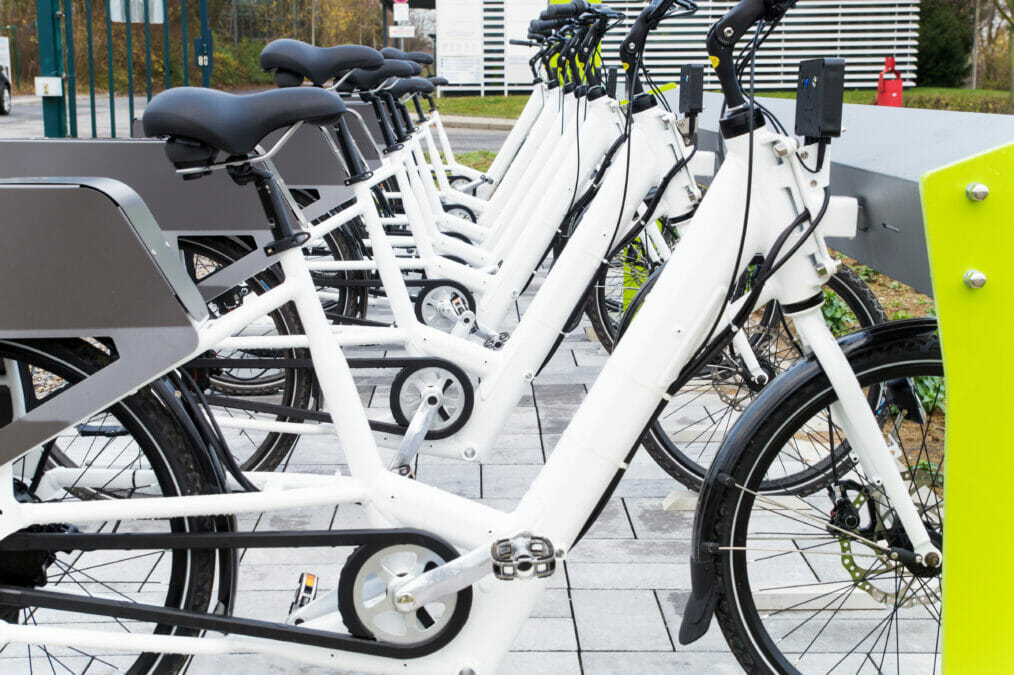Active travel is fast becoming the ‘go-to’ method of travelling. A couple of months ago, TfL and London Councils chose operators Dott, Lime and TIER to launch a 12-month trial for rental e-scooters. It signals yet another post-pandemic ambition to move towards sustainable travel, and this micromobility shift bolts onto the significant rise in active travel uptake (e.g. cycling and walking) and popularity of rental (e-)bikes. We are emerging into a new world, with a huge range of ways to travel.
In this new world, we are trying to create an infrastructure that can adapt to these new modes, and the complexity they introduce to the ecosystem. But a key question remains: how do you monitor these modal shifts in travel, separating the successful from the failures, and defend against the naysayers? By measuring what matters, we can continue to promote positive change in our cities and make them cleaner, safer and smarter for all.
Modal shifts: the growing active travel spectrum
Since the start of the pandemic, there has been a clear modal shift in everyday travel on a local and global scale. An increase in human-powered mobility, such as cycling and walking, was the first reaction to being locked indoors. However, we’re also seeing a rise in the use of micromobility vehicles, in the form of e-scooters, e-bikes, e-cargo bikes and other electric vehicles, with new trials set to increase their use yet further. With the sustainable travel spectrum widening rapidly, the number of interactions is growing exponentially – and the ability to accommodate all these users alongside private vehicles and public transport, while also aiming for sustainability goals, is becoming increasingly tricky.
Schemes such as segregated cycle lanes, new cycle routes and flexible pedestrian-only zones, along with (at times controversial) Low Traffic Neighbourhoods and ‘School Streets’ initiatives, have all been introduced to boost sustainable travel, road safety, air quality and people’s way of life. But without data on their usage, and now the growing complications of more active travel interactions, their success remains in the balance. Complaints ranging from lack of public consultation, limited use, infringement on space, and increased congestion are inhibiting their rollout. The key to unlocking their success – data.
The green renaissance of street poles in smart cities
Why data is the holy grail to facilitating change
In order to gain insight into these changing trends and how schemes are being used, technology is vital. Authorities can gain a vast range of detailed insights by harnessing new computer vision techniques. For example, an AI sensor placed at a specific road or junction is able to anonymously classify and measure in real-time different modes of travel through counts (e.g. 6 cyclists, 4 e-scooters) and capture traits such as speed and pathways. Other technology, such as running/cycling apps, maps and data exhausts from rental schemes, are able to accrue data on a wider scale, showing more general, macro trends. Combined, they can create a large, detailed dataset into changing travel trends in the local area.
The ability to accrue such data is pivotal to the success of sustainable travel schemes and infrastructure changes; it provides objective, accurate evidence of their impact, to feed back to funding bodies and the stakeholder public alike. One of data’s key use cases is assessing the ‘before, during and after’ results of initiatives, showing if the changes are being used by sustainable travel users, how they’ve affected interactions with other road users, and help determine whether they have contributed to a modal shift in travel. This data helps councils make informed decisions about where to implement infrastructure changes, allows for continual adaptation of schemes, and even helps predict and plan for future changes. With e-scooters currently occupying bike lanes, road space and even footpaths, data will be paramount for designing new ways to best accommodate all road users.
The City of Port Phillip, Australia, is one of the latest examples of where AI technology is being rolled out to help local authorities retrieve anonymous data insights on bike, pedestrian and motor vehicle movements along key transport strategy routes in the city. This will enable the council to understand interactions between these modes and newer modes like e-scooters and therefore plan physical changes that will boost active travel, reduce conflict between modes, ease traffic flow and, ultimately, lower congestion and pollution levels.
The biggest trends in tech sustainability
The knock-on effect: impact on congestion and emissions
These schemes of course help aid air quality targets by facilitating and encouraging green travel. However, the introduction of initiatives needs to be balanced with the effect it could have on other vehicles and the congestion/emissions to arise from that. Smart traffic signal control alongside these schemes is able to both prioritise sustainable modes of transport and also facilitate the most efficient way to ease traffic flow and reduce emissions, by learning from its environment and adapting in real-time. Through technology and data, authorities can design schemes that account for all these factors. They can also then measure if congestion has reduced or been displaced to other areas and decide if or what interventions are needed to help address this.
The technology also has the potential to link up with pollution sensors, street furniture, and geo-spatial technology, to create a hub of data that is able to reduce congestion and vastly improve air quality in polluted areas.
We have a golden chance to create sustainable cities through intelligent design, and the growing spectrum of sustainable travel modes is only making the need for greater datasets on our roads more critical. The more detailed insights we can attain, and the more responsive our cities are to its citizens, the better we can create a system of travel that can accomodate all users while significantly reducing pollution levels. Data has the power to unlock this future, now.








